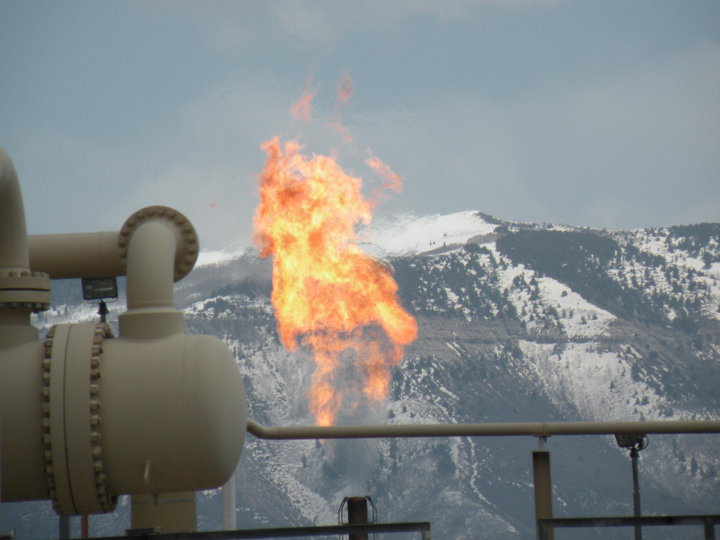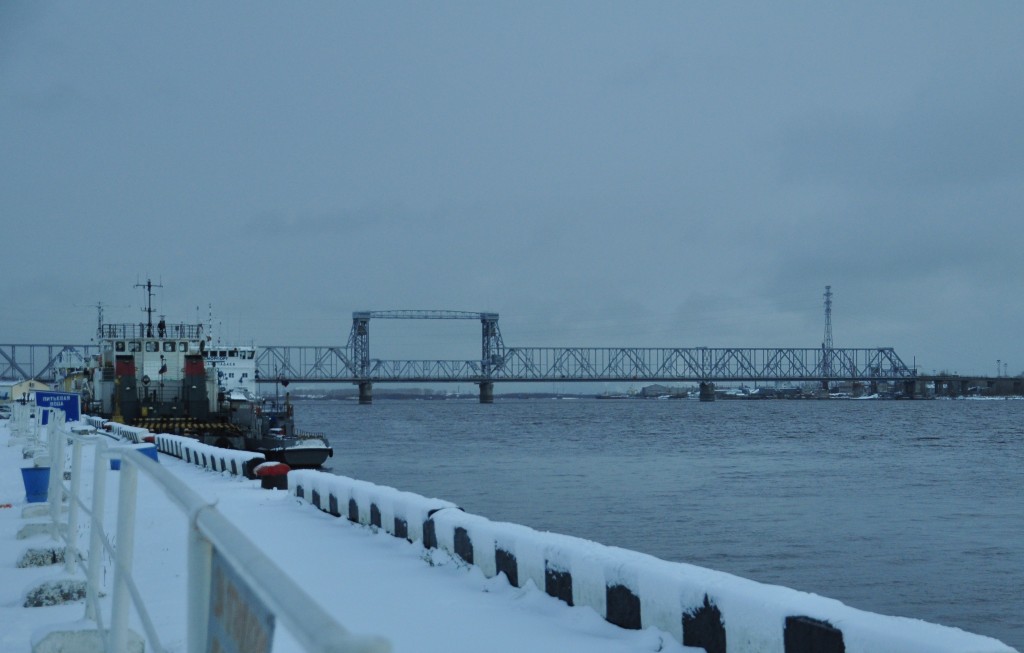Fracking: A story of success? (Part 1)
FRACKING or HYDRAULIC FRACTURING – a sought-after gas development method appears to be on the brink to capture the globe.
With a multiple blog series Global Ideas wants to bring a complex issue into focus: How did it come to this development, will fracking play an important and necessary key role in the future of the global energy supply and can it be taken seriously in an ecological context?
But first of all: why is natural gas “fracked” and what exactly does that mean?
Natural gas is one of the main energy resources worldwide. It had barely a one-quarter share in the global energy supply mix after oil and coal in 2011. The fossil fuel energy source provides primarily heating and electricity.
Conventional natural gas – consisting primarily of methane – occurs under the earth in coal beds and is stranded and extracted in natural gas fields. It is mostly transported through huge pipelines or via tankers and trucks from the delivering country to the importing country which is buying and consuming it. Natural gas is on the one hand often considered to be the cleanest burning fossil fuel energy, producing less carbon dioxide then either coal or oil. But critics like Tom Wigley, researcher at the US National Center for Atmospheric Research are saying it’s the opposite, if you consider the methane leaks of natural gas production amongst other aspects.
Noneetheless, it is important to make a difference between conventional gas, which can be produced more easily as it naturally occurs in gas or oil fields, and unconventional gas (“shale gas”), which is trapped underground by impermeable shale rocks and needs to be isolated from the shale. The production methods are different and so are the effects on climate. We will examine more in detail later on to which degree and extend.
Fracking describes the whole process of delivering and bringing the unconventional gas to the earth’s surface: artificial flaws are busted into the deep-lying layers so the gas can escape and different chemicals are used to keep the korridors open.
Have a look here how it works:
This method isn’t new anymore but thanks to an advanced technique higher profiled then ever before.
Due to the new technology shale gas and a part of some oil deposits can be accessed. Therefore fracking is often described as promising solution to overcome global energy crisis:
As a job procurement source, an alleged carbon dioxide reducer and a guarantee for a larger energy self-sufficiency fracking could become the redemption for several countries with significant shale gas occurrence.
There are different motivations, needs and ambitions associated with hydraulic fracturing depending on a country’s geopolitical position, as well as diverse attitudes on resolving energy crisis. A concise and vigorous statement about the benefits of natural gas and fracking comes from Aubrey McClendonin, chief executive officer of the gas and oil compnany Chesapeake Energy, the second biggest producer of gas in the USA:
“We’re going to be able to say in the next 10 years, ‘To hell with OPEC‘ “
Blatant high hopes for fracking as it appears –
Get an overview in the upcoming 2nd part of our Blog Series: Fracking Worldwide: Which countries are fracking, which are about to frack and why is hydraulic fracturing banned temporarely in others?
Author: Julian Claudi
Editor: Klaus Esterluß
More intense hurricanes due to global warming
Many people in the world are following the way of hurricane Sandy at the moment, which hit U.S. Eastern coast last night and caused floodings and black outs in the New York area.
The densely populated and technologized regions at the Atlantic coast of the U.S. are at higher risk for more and more intense hurricanes in future time – also due to climate change, scientists say. There are mainly two criteria that account for this link: the increased ocean surface temperatures and regional cycles that amplify the effect.
Nontheless it is not that easy to link one particular weather event (as hurricane Sandy is) directly to climate change. Scientific evidence rather provides a model for the overall situation: the projections show that the criteria named above theoretically lead to more events like Sandy. But so far scientist cannot precisely forecast single weather events to come due to climate change.
Vaccination for everyone, the polar way
 “Have they cleared the landing strip?”, I asked my seat neighbour when our plane was about to land in the North Russian city of Archangelsk last wednesday. My seat was not on the window, all I could see was right in front of the small window: a lot of snowflakes twirling in the air. It is winter already. When we took off in Berlin in the morning, the autumn sun rose. “Yes, they did”, the colleague next to me answers. “There is less snow underneath our plane then aside us.” The plane slows down.
“Have they cleared the landing strip?”, I asked my seat neighbour when our plane was about to land in the North Russian city of Archangelsk last wednesday. My seat was not on the window, all I could see was right in front of the small window: a lot of snowflakes twirling in the air. It is winter already. When we took off in Berlin in the morning, the autumn sun rose. “Yes, they did”, the colleague next to me answers. “There is less snow underneath our plane then aside us.” The plane slows down.
The next morning, all the snow is thawed. A local man says: “It is quite mild for this time. Normally it is snowing already in middle of October.” Is it just freak weather or already climate change? I prefer not to ask that question.
It emerges that people in Archangelsk do not really believe in climate change: It’s not so bad, they say, all natural. That’s the undertone at a discussion panel on the German-Russian Media forum that is running at the moment in Archangelsk.
I am almost relieved, as a researcher from Northern Public Medical University says: “The existence of climate change is beyond all question”. But a second later I wince as she continues: “We are not interested in what is causing climate change. If humans are responsible … who knows.” It would be more important to think of the consequences and to protect the health of the people. The health professional Zhanna Varakina has contributed to a research project of the World Health Organisation (WHO). The project title is truly condensed, in terms of a scientific paper: “Impact of climate change on human health and assesment of possibilites for adaption in the North of Russia.”
Varakina finally found out: Today there are sixty times more cases of tick-borne encephalitis as there were 15 years ago. What this means in absolute numbers, she can’t tell instantly. Tick-borne encephalitis, short TBE, is caused by virus-infection. These viruses get into the human body when one is bitten by a virus-infected tick. “20 years ago those infected tics could not be found here. It was simply too could, so they couldn’t survive here as tics are very sensitive to temperature”, the researcher says. But nowadays it is here, in Archangelsk, northern of 64th latitude, warm enough for them. A look at the online availiable climate-tables reveals for Archangelsk: In winter the montly average temperature ranges from zero to minus 13 degree Celsius – in summer it is 16 degrees on average and maximum temperature is 21,8 degrees. To me, this still seems quite brisky, but if the ticks feel fine with this…
So I ask the researcher: How do you protect the 350.000 inhabitants of Archangelsk – with a TBE vaccination, as is customary in Germany? “That would be too expensive” she answers. The TBE vaccination is said not to be included in the national vaccination schedule, which means everybody would have to pay for it on his own. But actually, the vaccination is not necessary, she adds: “In spring, two weeks before the snow starts thawing, we distribute chemicals against those animals.”
Franziska Badenschier
Expedition into the primeval forest
No tough stuff from “Tough Stuff”!
“Take a gap year and save the planet!” This could be the motto of the Kenyan based organisation “Ecofinder”. Founded in 1995 the Kenyan grass roots organisation helps communities around Lake Victoria to lead a more sustainable life. GLOBAL IDEAS has invited Nicolas, one of Ecofinder’s numerous volunteers, to write about his experience:
 What do you need for a succesful small-scale solar lamp business?
What do you need for a succesful small-scale solar lamp business?
There are two important things:
First: Highly motivated and convinced people who know that what they are doing will improve their lives and help to protect the environment. And second: Affordable solar lamps of good quality and longlivety.
Ecofinder started his solar lamp projects with 80 “Tough stuff” lamps. But unfortunately we had problems with faulty lamps after just three months. Our “Solar Lamp Entrepreneurs” could not rent as half as much lamps as before. Their business were in danger.
We changed the lamp trade mark. Our new lamps are from “Sun King”. The lamp’s quality is much better. They more or less rescued the project. It was possible to increase the number of solar lamps. At the moment 140 solar lamps from Ecofinder are used in areas around Kisumu nearby the Lake Victoria and the number is rising.
Because of the problems we had with the old lamps, we started buying lamp kits that have to be assambled. Organizing this is my task at the moment. We want to establish a Solar Lamp Workshop where employees learn to assemble the final lamp.
That would create more positive impacts on the community:
Not only we can offer affordable lamps, we would also offer new jobs for unemployed people. In conclusion it is possible to provide more and more people with solar lamps. Furthermore it would be obvious for everyone that eventually broken lamps could be fixed in the workshop.
I hope that my task, the workshop, will be reality in future.










Feedback